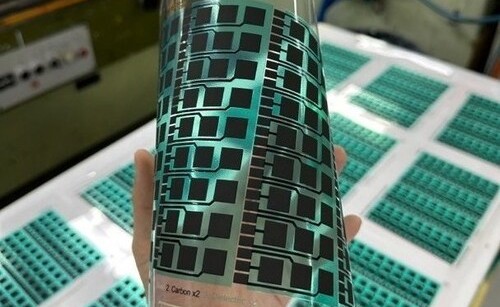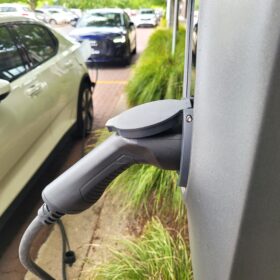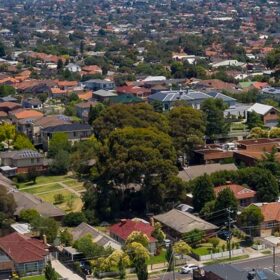This achievement establishes the foundations for collaboration with international printed electronics centres and potential end-users. Through these partnerships, Energy Ink may be evaluated and co-developed into prototype cells and product demonstrators within industrial-style facilities. Building this capability broadens the opportunity base and creates a clear pathway from research conducted in Australia to active engagement with global industry.
Transfer Program Outcomes
Over 2,000 prototype Energy Ink cells were successfully fabricated in a single production run and validated, confirming reproducibility in a commercial facility. In addition, 30 multi-cell arrays were connected and operated continuously for seven days at the target baseline power.
Fabrication in a commercial facility
Energy Ink cells demonstrating reproducibility under industrial processes.
High Yield Achieved
2,051 of 2,052 cells (99.95%) passed compliance testing for open-circuit voltage and short-circuit current.
Connected arrays manufactured
Successfully validated that interconnected cells can operate as functional arrays.

Multiple A5 sheets produced
Marking progress toward sheet-level fabrication, essential for scaling into demonstrators and eventual commercial deployment.
Energy Ink is being developed in collaboration with a world-class materials science team at the University of New South Wales (UNSW). UNSW is globally recognised for its expertise in functional materials and electronic printing with state-of-the-art nanofabrication, printing and characterisation facilities. The technology has been supported with more than $5 million (USD 3.2 million) in competitive Australian Research Council (ARC) grants, including prestigious ARC Industry Fellowships.
Further Testing
Earlier development showed the low-power, disposable Energy Ink prototype powering a skin patch with two 4 cm × 4 cm cells (32 cm² total area) at 2.5 µW/cm². The transfer fabrication program scaled this performance across thousands of cells.
In the transfer program, 2,051 cells out of 2,052 achieved 100% yield for both open-circuit voltage (>1.2 V) and short-circuit current compliance. A 7-day constant current test of 30 arrays (27 cells in each array) was then conducted at a capped 10 µA per cell to match the skin patch baseline.
All 30 arrays maintained continuous output, each sustaining 270 µA (0.27 mA) for the 7-day period, with minimum power density of 2.5 µW/cm². Testing was performed under semi-controlled indoor humidity of 55%–70% RH, consistent with printed electronics facility environments.
Development Pathway & Challenges
With reproducible fabrication of prototype Energy Ink cells outside the laboratory now achieved, detailed characterisation will be undertaken to establish a robust dataset. The next objectives are to:
- Engage international printed electronics centres — to test and develop Energy Ink alongside new materials, packaging, and electrodes. Focus on those with existing commercial relationships.
- Initiate discussions with end-user innovation hubs — global companies often run programs for innovative technologies such as battery-free power sources.
- Progress toward pilot programs — integrating Energy Ink into demonstrator products to generate data for potential commercial adoption.
Energy Ink remains at an early stage, with challenges ahead:
- Performance and durability — maintaining stable output over longer periods.
- Scalability — moving from prototype cells and sheets to larger or stacked formats.
- Integration — combining effectively with circuits, sensors, and packaging.
- Timelines — pilot programs may face delays and may not guarantee commercial adoption.
Company Comment
“Congratulations to our team. We look forward to strengthening our relationship with UNSW and collaborating internationally. Deep-tech innovations, especially new power sources, take time to mature but can deliver significant upside. Our Pooled Development Fund structure is designed for this — providing patient capital to capture breakthrough opportunities.” — Charles Murphy, Managing Director, Strategic Elements Strategic Elements.






By submitting this form you agree to pv magazine using your data for the purposes of publishing your comment.
Your personal data will only be disclosed or otherwise transmitted to third parties for the purposes of spam filtering or if this is necessary for technical maintenance of the website. Any other transfer to third parties will not take place unless this is justified on the basis of applicable data protection regulations or if pv magazine is legally obliged to do so.
You may revoke this consent at any time with effect for the future, in which case your personal data will be deleted immediately. Otherwise, your data will be deleted if pv magazine has processed your request or the purpose of data storage is fulfilled.
Further information on data privacy can be found in our Data Protection Policy.